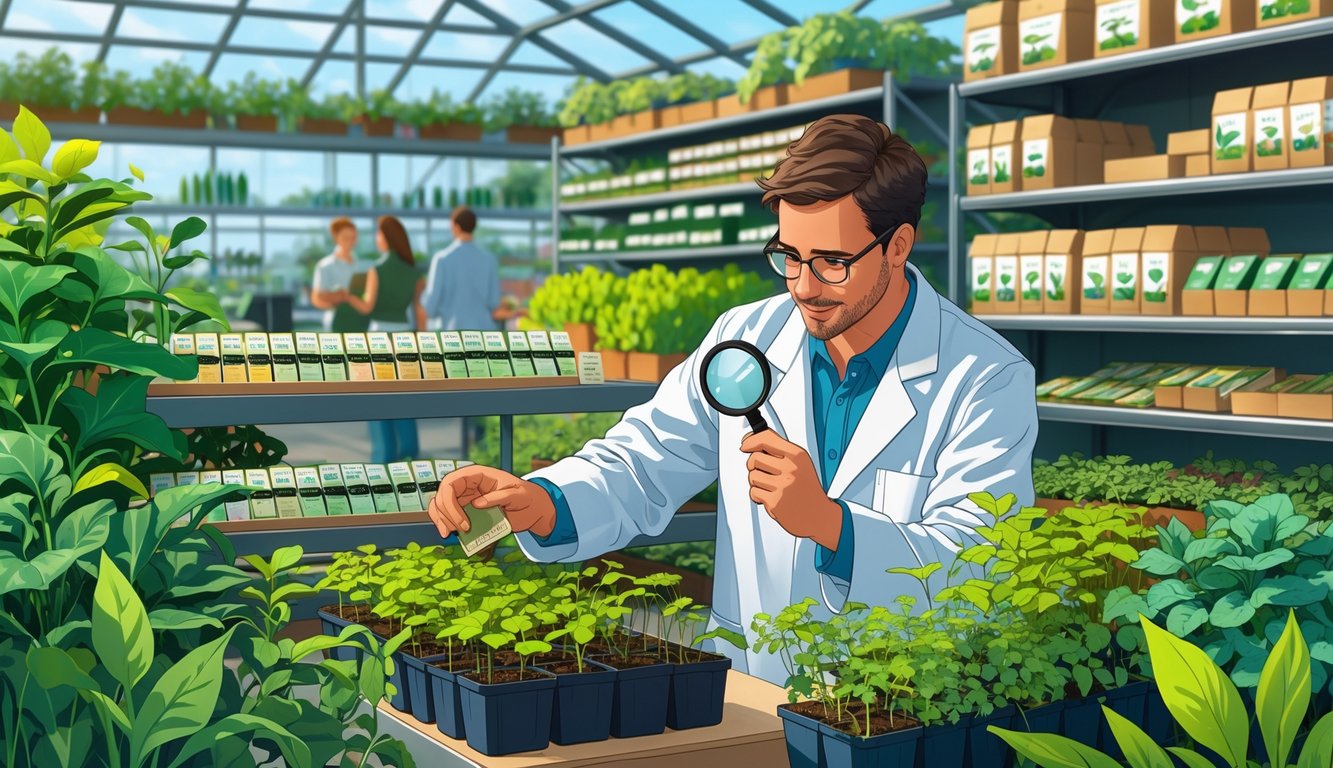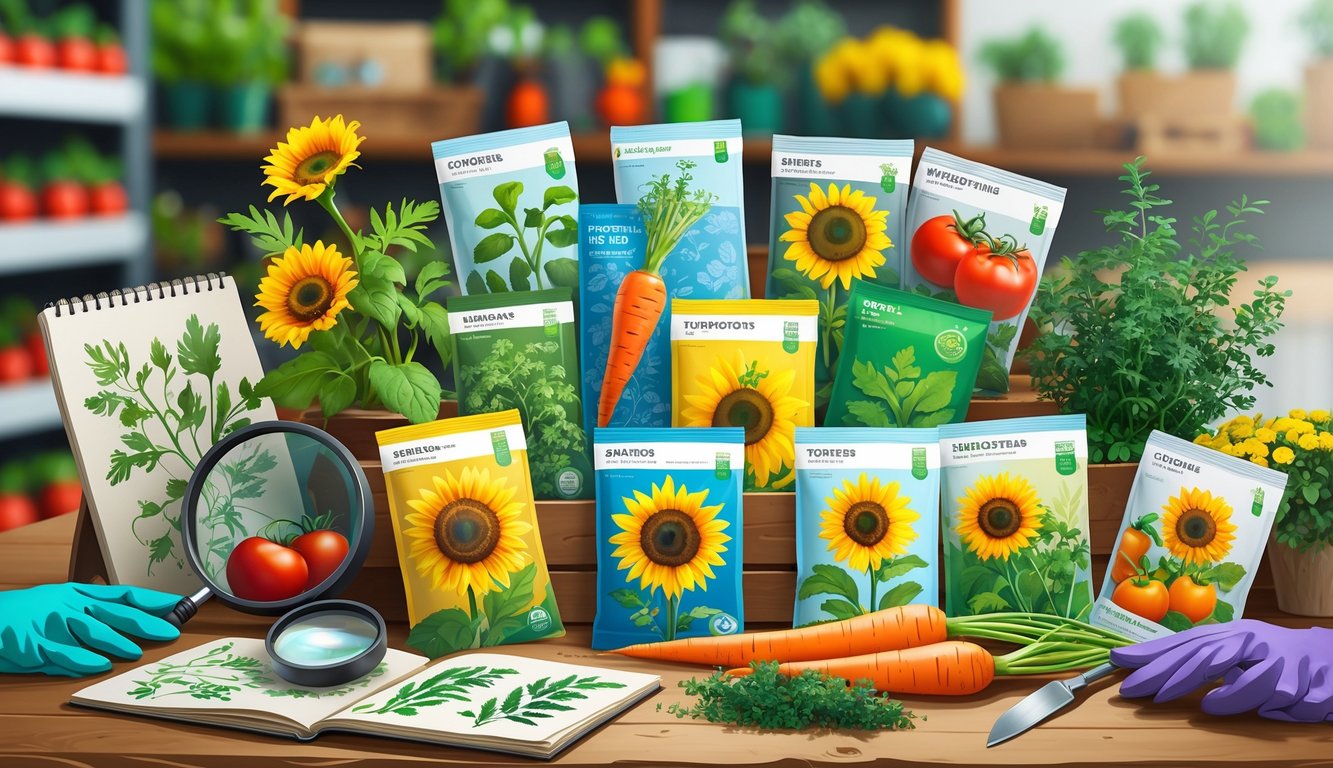
Top Botanist-Recommended Seed Varieties

Nobody told me that reading seed labels at midnight would empty my wallet, but here we are—every “expert favorite” or “limited stock” badge just makes me want it more. The seed racket loves botanist-endorsed varieties, but between demand, retailer markups, and those cryptic trial reports, most people never get the full story.
Popular Flower Seeds
Dahlia ‘Café au Lait’—everyone wants it, but last summer, plants from “vetted” stock didn’t even sprout for me, despite the fancy photos in every catalog. (I mean, those “trend” lists, like Gardens Illustrated’s, rarely match my reality.)
I tried ‘Queen Lime’ zinnias after reading about their pollinator appeal, and—surprise—hoverflies swarmed. Dr. Remy Lee at RHS did wind tunnel tests, said pollination doubled in their beds. Not that any supplier’s labeling packets by hoverfly stats.
Cosmos, snapdragons (the ‘Potomac’ series—florists love them), and if you can even find them, British wildflower mixes from reputable names, all get snapped up. Calendula’s a staple—every botanist I know grows ‘Flashback’ or grumbles about nasturtiums hogging the “easy” lists.
High-Demand Vegetable Seeds
Tomato ‘Sungold’ is everywhere. I can’t open a gardening forum or sit through a Q&A without someone raving about it, sticky stems and all. ‘Green Zebra’—yeah, it’s always in those “botanist-approved” bins, but honestly, I’ve never been convinced it’s about flavor. Supposedly, Kings Seeds ran a trial last year and found more B-vitamins in it than most cherry types. Maybe. I’d double-check those numbers if I were you.
‘Boltardy’ beetroot? I toss it in the ground, forget about it, and it still pops up. Works every time. Spinach—specifically ‘Leafy’—I spent half a spring ranting about its spotty performance. Disease resistance? Sure, the science says so, but my results? All over the place. Shelf labels love “expert pick” stickers, but Marshalls’ own blog admitted their germination rates swing wildly. You’d think they’d bury that info, but nope, it’s out there if you look. I don’t trust any “prime stock” claims unless I’ve seen the actual test data.
‘Honey Nut’ squash is the darling of every sustainable garden group lately. The 2025 grower lists can’t shut up about it. It’s small, dense, and every “botanist pick” list has it. My neighbor, the one who only grows mutant cress, would never care about squash genetics. That’s his loss, I guess.
Rare Finds and Heritage Seeds
Honestly, good luck with rare and heritage seeds. As soon as someone calls it “heirloom,” it vanishes behind a paywall, a pre-order list, or some horticultural society auction. Charles Dowding swears by Marshalls for old stock, but I watched “Seven Hills Brussels” turn my friend’s garden into a mess—huge leaves, not a sprout in sight. He blogged the whole disaster (directly tested and documented), so it’s not just me.
Real experts—actual botanists, not the TikTok crowd—go on about ‘Mr. Little’s Yetholm Gypsy’ potato. Too bad UK seed rules mean you see it for a year, then it’s gone for ages. Last winter I tried ‘Cherokee Trail of Tears’ bean; seed savers’ forums and retailer advice never line up. Season to season, reliability is a dice roll. Even Plantlife’s reference sheets dodge giving firm numbers or guarantees. You want certainty? Unless you know a botanist or have a secret seed-trading pen pal, good luck.
The Role of Big Retailers in the Seed Market
Every time I think I’ve seen every off-brand seed packet, some retailer dumps a whole wall of “botanist-verified” seeds next to the discount air fryers. Why? No clue. Retail chains aren’t just playing around—they’re mixing ag-tech, random trends, and a bit of chaos into the gardening aisle. I can’t even find heirloom basil half the time.
How Retail Giants Are Shaping Trends
Here’s the weirdest part: big-box stores aren’t copying boutique shops. They’re pushing botanist-backed seeds hard, scraping data from shopping carts and social posts, so suddenly everyone wants petunias. Why? Who knows. The USDA says U.S. corn seed value jumped from $2.1 billion to $7.9 billion since the early 2000s. That’s not just farmers—it’s city people, hobbyists, whoever. I called a Cornell Ph.D. about it—she said seed trends now move like sneaker drops. I mean, really? Trend-driven buying is the new thing. Retailers chase what people want, so if heirloom or sustainable is hot, that’s what gets shelf space. Suddenly my local store has QR codes everywhere. I stepped on one. Thought it was gum.
Expanding In-Store and Online Offerings
Sometimes I walk into a store and can’t tell if they want me to grow tomatoes or join a cult. That’s the vibe. Retailers stuff shelves and websites with “exclusive” packets, team up with garden influencers nobody knows, and use real-time sales data to push pollinator mixes in places that barely see bees. They’re always one step ahead, or at least trying to be.
Industry reports break down seed market segmentation by crop type, hybrid, whatever, but it’s not just numbers. They build displays off sales charts, not what’s actually good for your garden. I once got tomato advice from a cashier quoting TikTok. The botanist picks end up everywhere, sometimes with “trial kits” or weird eco-facts. Does any of this help soil health? Maybe. Or maybe it’s just FOMO. Who’s winning? No idea.